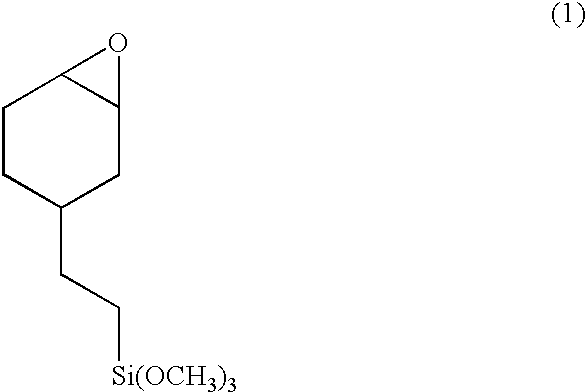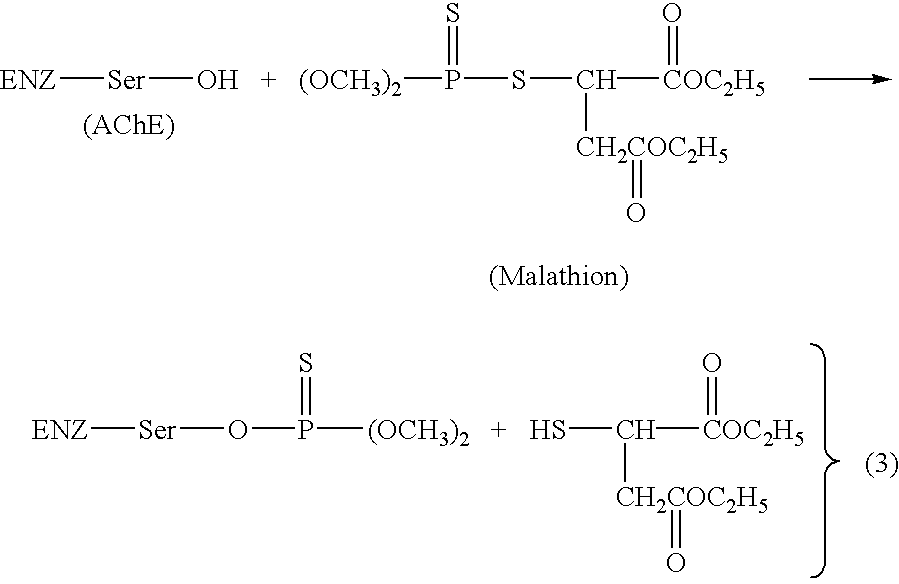Sensors with variable response behavior
a sensor and variable technology, applied in the field of biological indicators and sensors, can solve the problems of failure of previous attempts to prepare active gels of ache using the encapsulation procedures developed before, and achieve the effect of fewer false alarms and high specificity of interaction
- Summary
- Abstract
- Description
- Claims
- Application Information
AI Technical Summary
Benefits of technology
Problems solved by technology
Method used
Image
Examples
Embodiment Construction
[0082] The sensor which is the subject matter of the present invention preferably comprises a conductive polymer transducer and indicator biomolecules encapsulated in a sol-gel-derived material.
[0083] 1. The Sensor in General
[0084] FIG. 1 schematically illustrates two views of the sensor of this invention. FIG. 1(a) shows schematically the structure of an embodiment of the sensor 100. Generally, one sensor element is present on a dielectric substrate 1, but more than one sensor can be present in a particular assembly. For example, FIG. 1(b) shows a dielectric substrate 1, which can be commercially available (for instance, from ABTECH Scientific of Richmond, Va.) and which contains two sensor elements 100a and 100b combined in one assembly to be subsequently discussed. Such a two sensor element assembly was used for tests discussed hereinafter.
[0085] Two identical sensor elements can be provided in one assembly, or two separate sensor elements can be utilized. In such case one would ...
PUM
| Property | Measurement | Unit |
|---|---|---|
| Length | aaaaa | aaaaa |
| Length | aaaaa | aaaaa |
| Length | aaaaa | aaaaa |
Abstract
Description
Claims
Application Information
 Login to View More
Login to View More - R&D
- Intellectual Property
- Life Sciences
- Materials
- Tech Scout
- Unparalleled Data Quality
- Higher Quality Content
- 60% Fewer Hallucinations
Browse by: Latest US Patents, China's latest patents, Technical Efficacy Thesaurus, Application Domain, Technology Topic, Popular Technical Reports.
© 2025 PatSnap. All rights reserved.Legal|Privacy policy|Modern Slavery Act Transparency Statement|Sitemap|About US| Contact US: help@patsnap.com



